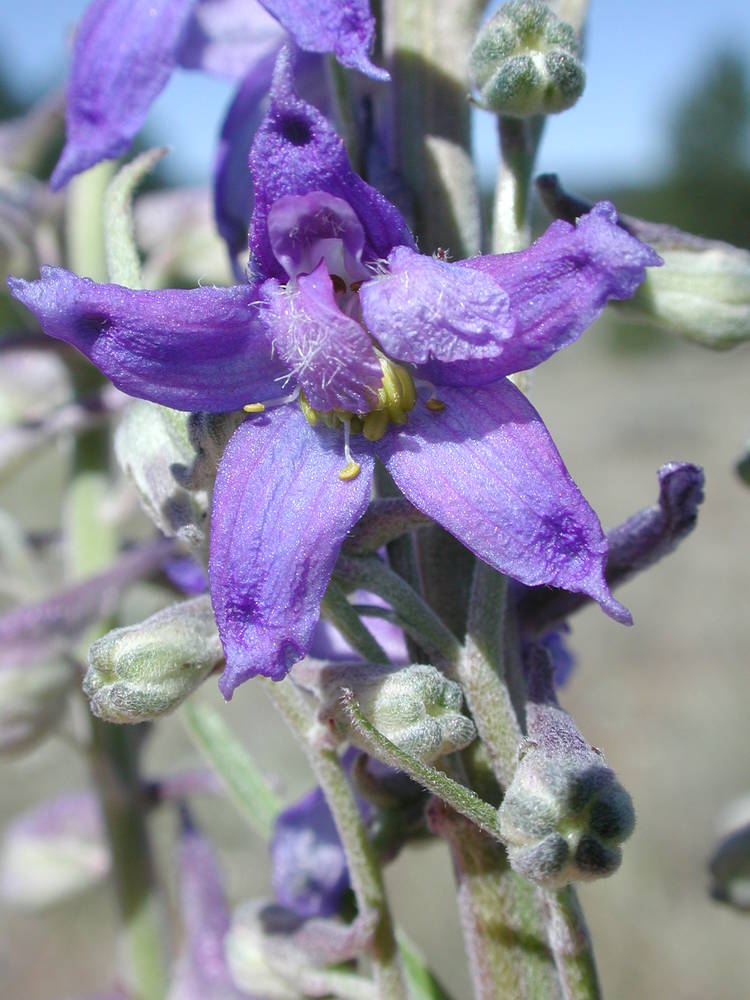
[This taxon will be assessed for treatment in volume 3 of Flora of Oregon, which is not yet published.]
as described under Delphinium stachydeum
Stems (40-)70-150(-200) cm; base reddish, puberulent. Leaves mostly on proximal 1/2 stem; basal leaves absent at anthesis; cauline leaves 8-16 at anthesis; petiole 0.5-17 cm. Leaf blade light green, ± round, 2-8 × 3.5-11 cm, sparsely pubescent; ultimate lobes 7-19, width 1-8 mm, apex tapering to point; veins obscure. Inflorescences (14-)30-60(-102)-flowered, dense, cylindric; pedicel spreading, 0.8-2(-3) cm, puberulent; bracteoles 1-4 mm from flowers, green, linear, 2-7(-10) mm, puberulent. Flowers: sepals bright blue, puberulent, lateral sepals spreading, 9-13 × 4-7 mm, spurs straight, within 30° above or below horizontal, 11-17 mm; lower petal blades ± covering stamens, 4-8 mm, clefts 0.5-2 mm; hairs sparse, centered, mostly near junction of blade and claw above base of cleft, white. Fruits 10-15 mm, 3.5-4.5 times longer than wide, puberulent. Seeds wing-margined; seed coat cells with margins straight, surfaces ± roughened.Flowering summer. Swales in Artemisia scrub; 1300-3000 m; Calif, Idaho, Nev., Oreg., Wash.Populations of Delphinium stachydeum are widely scattered in isolated mountain ranges surrounded by desert or grassland. The species has been reported (visual sightings) from northwestern Utah; no specimens have been seen from there. Hybrids between D . stachydeum and D . glaucum have been reported. Although D . stachydeum has been seen flowering within 30 m of flowering D . depauperatum , no hybrids have been observed.Delphinium stachydeum may possibly be confused with D . geyeri , from which it may be distinguished by its usually greater plant size, less pubescent foliage, and later flowering date. Delphinium stachydeum also may be confused with D . glaucum ; see discussion under that species.